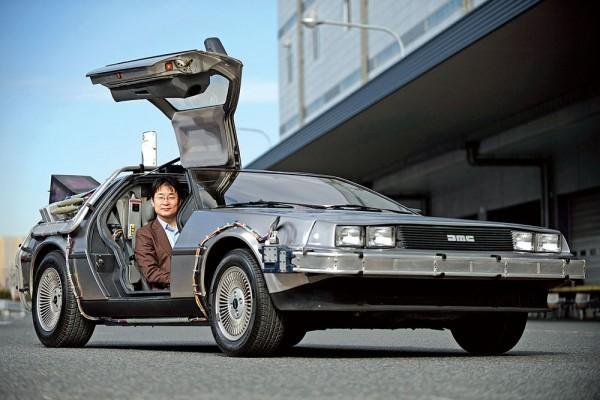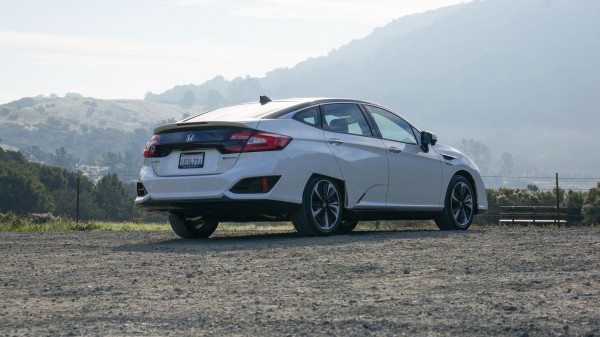
In the past week, I believe that everyone is immersed in the festive atmosphere of the Spring Festival. The work on the week has been put aside, but the automotive technology circle has not stopped moving forward because of the Chinese New Year. I heard that used clothes can start to become car fuel. The super high-speed rail is also a step closer to us. There are still many bright black technologies appearing this week. Let us take a quick look.
â—It becomes a reality that waste clothing becomes a car fuel
At the end of the movie "Back to the Future", Dr. Emmett Brown, the mad scientist, re-emerged with his time shuttle DeLorean, powered by waste-recycled energy from a recycling reactor called Mr. Fusion. . Today, Japanese company Recycler Jeplan is building a real version of Mr. Fusion, for which they even purchased a copy of DeLorean to help promote. Recycler Jeplan is committed to extracting cotton fibers from used clothing, but turning it into energy.
According to Jeplan, 1 ton of waste can produce about 700 liters of ethanol, which saves land and water. The company has also developed a method to recycle polyester , which is incorporated into many fabrics to reduce cost, increase durability, and resist wrinkles. Jeplan says that about 60% of the world's annual clothing is made from polyester, which can be a valuable resource if broken down and reused in new clothing. Polyester can be extracted from the garment by multiple distillation and evaporation cycles, and the process produces half the carbon dioxide of the former compared to remanufacturing these materials.
â— Super high-speed rail is one step closer to us
Last weekend, in the small town of Hawthorne near Los Angeles, California, 20 teams will compete for the title of the best super high-speed rail design. Super high-speed rail is a kind of transportation designed based on the principle of “vacuum steel pipe transportationâ€. It has the characteristics of ultra-high speed, high safety, low energy consumption, low noise and low pollution. Because of its capsule shape, it is also called “capsule high-speed railâ€. ".

This concept was first proposed by SpaceX and Tesla CEO Elon Musk four years ago. Since then, a large number of companies have emerged with the goal of commercializing this technology, including Hyperloop One and Hyperloop Transportation Technologies. The super high-speed rail can travel in closed vacuum or low-pressure pipelines at speeds of up to 600 miles per hour (about 965 kilometers). This means that it takes only 30 minutes from Los Angeles to San Francisco, and it takes 6 hours to drive.

Musk did not express interest in the creation of a super high-speed rail company, but he has been working hard to promote scientific research on this concept. In the end, he sponsored the Super High Speed ​​Rail Cabin Design Competition, and the finalists in the finals have now appeared in SpaceX's San Francisco campus, where a one-mile track has been built to prepare for the best cabin design. According to Musk's request, once the winners are announced, the secrets of their super high-speed rail design success will be made public and their design will be open to the entire super high-speed rail industry. According to the official website of the organizer, the 2nd Super High Speed ​​Rail Cabin Design Competition will be held this summer. “The competition standards will focus on one aspect: the highest speedâ€.
â— GM and Honda will cooperate to produce fuel cells
Japanese automaker Honda and General Motors (GM) announced on the 30th that they will cooperate in the production of a new generation of hydrogen-powered fuel cell vehicles. . The products planned for mass production are fuel cells and their peripheral machines, and they are being further miniaturized. They are respectively allocated to fuel cell vehicles produced by the two companies after 2020. The production subsidiaries established by the two companies with a total investment of 42.5 million US dollars (about 290 million yuan) are located in GM's plant in Michigan, USA. The president and the deputy president took a two-year rotation system. Initially, the president was dispatched by GM, and Honda sent a deputy president. The production subsidiary is expected to add about 100 employees.

California requires that car manufacturers must sell a certain percentage of “zero-emission vehicles†in 2018, and environmental protection requirements will be further improved. Honda predicts that the United States has the greatest demand for fuel cell vehicles, and concentrates its production in the United States. The plant in Takanezawacho, Tochigi Prefecture is going to stop production in the future.

Regarding fuel cell vehicles, Toyota Motor launched "MIRAI" in 2014. Although Honda sold the "CLARITY FUEL CELL" last year, it is expensive, and the infrastructure such as the hydrogen refueling station that supplies fuel hydrogen lags behind. The sales of MIRAI and CLARITY in Japan and Europe and the United States are around 2,500 and 100 vehicles respectively.
â— Car2go introduces new models to enhance user experience
If you've ever wanted to experience the car sharing service car2go, but give up because you don't have a favorite model, you can reconsider it now. The platform recently announced that it has reached an agreement with Daimler to add two new Mercedes models to its fleet, but initially it will only be launched in four major cities across the United States.

In the pilot project in 2016, car2go introduced some Mercedes-Benz B-Class models, providing customers with more space, rather than just getting into 2 people like Smart. In 2017, car2go chose different models. They are the 2017 Mercedes-Benz CLA and GLA (the smallest car/crossover model of the car manufacturer).

Car2go pioneered the launch of CLA and GLA models in four cities (Austin, Portland, Seattle, Washington, DC) and will introduce more new models to the North American market later this year. However, its usage rate is also a bit more expensive than Smart (although the initial billing is still $0.41/min, about RMB 2.8/min): one-hour is $19 (about 130 yuan RMB), and the whole day is $79 ( About 543 yuan RMB).

High Visibility is an important and necessary requirement in many working environments from Railways to Airports and road works, construction, Emergency Services , Police and many more.
Reliability and performance is a must in these demanding circumstances. high visibility fabrics are certified to EN 20471, also including some trim/contrast colours and are available in a wide range of weights and compositions .
- High reflection and luminance values
- Excellent colour fastness and colour migration properties
- GORT certified for UK Rail sector
- EN 20471 Orange, Red and Yellow + some contrast / trim colours
- Laminated Foul Weather / High Visibility Bretex Waterproof / Breathable optionsPolyester /cotton fabrics are available in various constructions, weights and weaves as well cotton rich.
- Good Colour Fastness
- Industrial Washing
- High Abrasion charecteristics
High Visibility Fabric,High Visibility Teflon Fabric,High Visibility Dobby Fabric,High Visibility Oxford Fabric
Wujiang Bonheur Special Textile Co.,Ltd. , https://www.bonheurtex.com
![<?echo $_SERVER['SERVER_NAME'];?>](/template/twentyseventeen/skin/images/header.jpg)